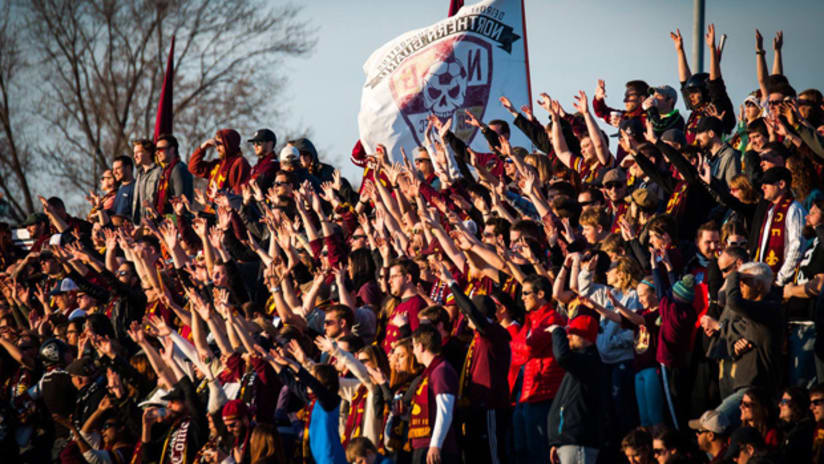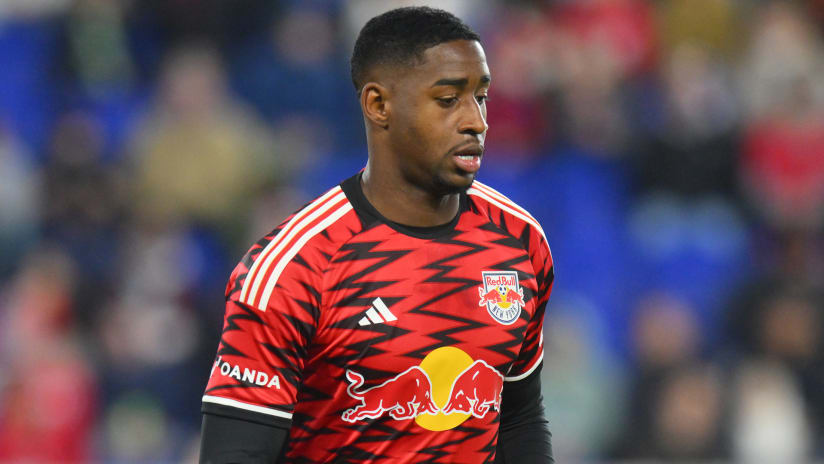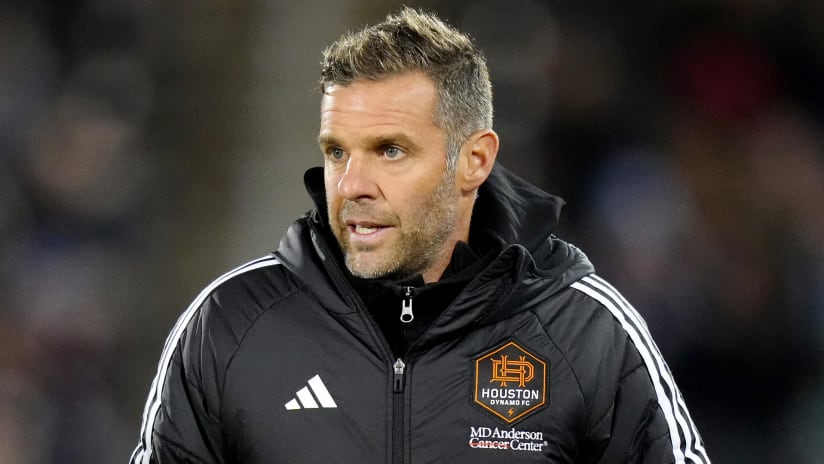Justin Meram and Soony Saad are Michigan men.
Yes, they both went to school at the University of Michigan and were part of the men’s soccer program that, after just 10 years of existence, made the semifinals of the NCAA Tournament in 2010. But this goes beyond self-congratulatory Big Ten euphemisms.
Columbus Crew striker Meram grew up in Shelby Township, a suburb of Detroit, while Sporting Kansas City hitman Saad grew up on the other side of the metro area in Dearborn. Detroit is historically best known for being the home of the American auto industry, perennially successful hockey and basketball teams, and a perpetually dismal NFL franchise.
But for Meram and Saad, soccer was the only game in town.
“As a kid, yeah, it was,” Saad told MLSsoccer.com. “Youth soccer is huge in Michigan. … There’s a lot of different cultures and different ethnicities in that Detroit area – and throughout all Michigan, to be honest – that really emphasize the game of soccer compared to other American sports: football, baseball, hockey, basketball. Michigan has been a huge advocate for soccer in America ever since I was playing when I was younger.”
Meram concurs.
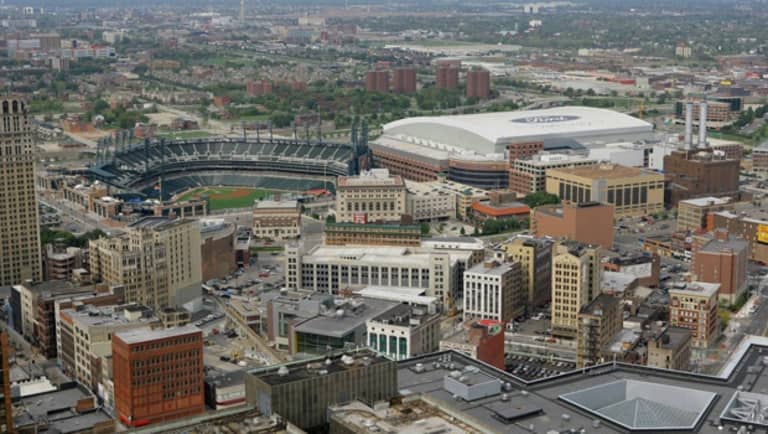
Downtown Detroit, with Comerica Park on the left and Ford Field on the right. (USA Today Sports)
“Michigan’s a huge soccer community,” he said. “It’s surprising that it’s taken this long [to get a pro soccer team].”
Surprising, indeed. Today, the name “Detroit” evokes urban blight and poverty, but the city was once the fourth-largest in the US, at its height the home to almost 2 million people and many more across the wider metropolitan area.
By the 1950s, Detroit-based auto companies GM, Ford and Chrysler accounted for more than 90 percent of all car sales in North America. Detroit was never just a boomtown; it was a major American city, and even in its decaying splendor it still hosts four major professional sports franchises.
Not soccer, though. Despite the game’s popularity in the metro area, the last professional outdoor team to call the Motor City home was the Express, which folded in 1983. If all goes according to plan, however, that’s going to change next year.
On April 1, the USL announced it had reached a preliminary agreement with Dan Duggan, the owner of the PDL Michigan Bucks, to bring a USL PRO franchise to Detroit in 2015, pending the formal submission of an ownership group and stadium plans on June 15.
“This has been in the works for a long, long time,” Duggan said. “After the collapse in ’08-09 and the car companies and all that crap, we just decided to wait on it.”
The city has been hit harder than most by the recession, and with more than 700,000 residents left within the city limits and unemployment at more than 15 percent, it’s badly equipped to mount a comeback. In 2013, Detroit became the largest city in US history to declare bankruptcy, and its $18-20 billion in debt is the largest amount a bankrupt municipality has ever owed.
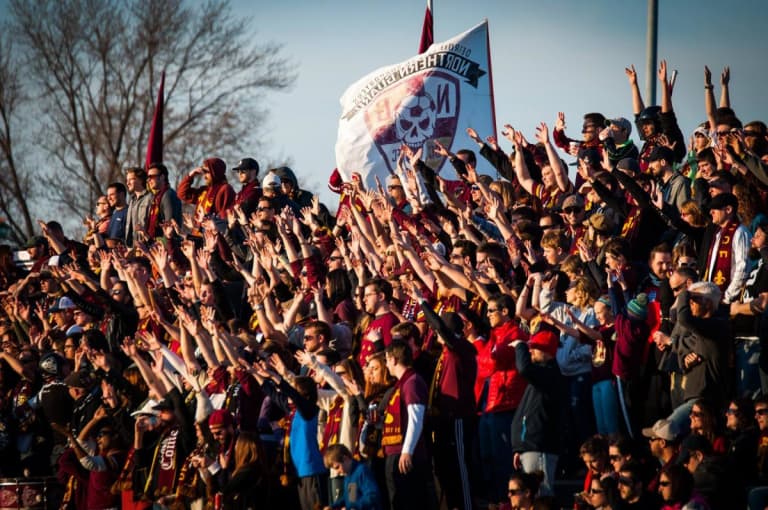
Detroit City FC supporters cheer their team during a 2013 NPSL match. (Courtesy of Detroit City FC)
It’s a very dark cloud, though not without some silver linings for the soccer-inclined, not least the Detroit metro area’s sizeable and influential immigrant population. As of 2012, there were around 90,000 registered youth soccer players in Michigan, the most of any state in the Midwest.
NPSL (fourth division) squad Detroit City FC, who kicked off their third season on Wednesday with a heartbreaking US Open Cup loss to Chicago-based RWB Adria via penalty-kick shootout, have consistently drawn more than 1,000 fans to the high school football stadium they play in, despite being a semi-professional team.
“We kind of made up the rules as we went along, but always being focused on, ‘Is this the kind of team we’d want to go see?’” Alex Wright, a Detroit native and one of the five co-owners of DCFC, told MLSsoccer.com. “One of the first things we did was design business cards that have our motto written on the back in Spanish, Arabic and English. We wanted to create an inclusive atmosphere.
“People that don’t live in the city are surprised when good things happen, but those of us that live in the city don’t have that sense of awe. … It’s bigger than soccer. If you’re a Detroiter, if you understand the city and you live in the city, you know so much better than someone who doesn’t what will work and what won’t. So much of what our city can accomplish is held back by people who don’t believe in its potential because they don’t understand the city, because they don’t live there.”
Wright’s team funded the team with their own money, which is not unusual for a new business in Detroit, he says. Loans are hard to come by, regardless of how good your business model may be.
But Wright is not the only Michigander trying to help foster soccer in Detroit, and not the only one that believes that the game can restore some vitality to the city. Dan Duggan’s brother Mike was elected mayor of Detroit last November, and though Dan says that they are not working together on the USL bid, soccer does run deep in the Duggan family.
Still, there are lots of questions to answer. What’s the team going to be called? Where is their stadium going to be built? How many people are going to show up to games? Will operating costs exceed Duggan’s first-year estimate of $2.5 million? Answerable questions, given time, but right now he’s on the clock.“Now we’ve got a good mayor in there who is going to turn things around,” Dan says. “There’s a lot of good soccer and positive things happening, so Detroit’s a place we want to be for the long haul.”
“It really is quicker than I’d like,” Duggan says of USL’s June 15 deadline. “Keep in mind that a lot of this has been going on for the last three to four years. … It’s something that I’ve kept very quiet for a lot of reasons, one being that there’s no reason to get people excited about something that may never happen. I believe we’ve got a 75 percent chance of this happening because of all the backstory that’s gone beyond what’s just been announced.
“It is still very aggressive, but we do have a whole lot of people that are interested. I don’t know that the league is going to make me have every T crossed and every I dotted on June 15, but I think I’m going to be able to give them enough with a stadium plan and an ownership group that they’re going to be pretty doggone excited about what I’m bringing to the table.”
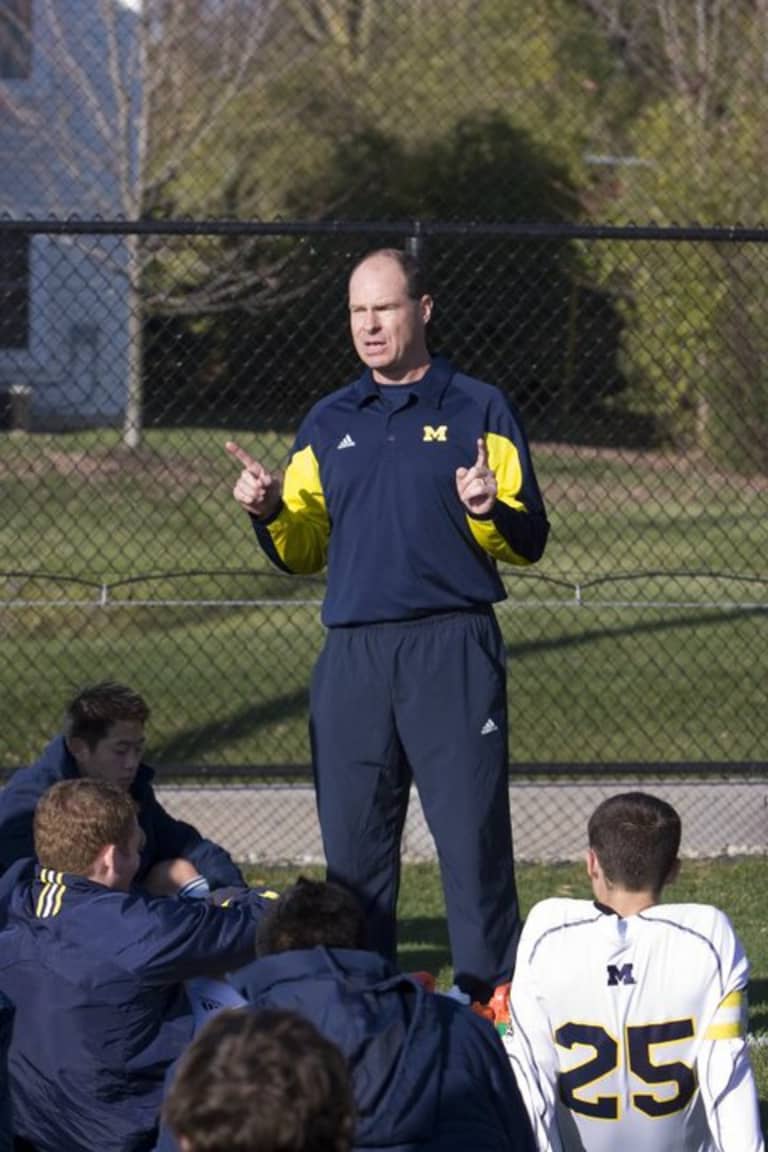
University of Michigan head coach Steve Burns has made it his mission to keep more talent in-state. (University of Michigan)
Whether the USL bid succeeds, however, is somewhat beside the point. With the Bucks, Detroit City and high-level Division I college teams at Michigan and Michigan State, this is a part of the country that can not only produce high-level players, but can now keep them from leaving. Steve Burns (pictured below-right), a Michigan alumni, coached the Bucks for four years before becoming the Wolverines’ first-ever varsity men’s soccer coach from 2000 to 2011.
“Coaching the Bucks, we would recruit all of the great soccer players in the state of Michigan that were college kids that left Michigan to go play at Indiana, or Cal-Berkeley, or Butler, or St. John’s, or Duke,” Burns told MLSsoccer.com. “They would come back to play with us in the summer and I would always ask them ‘If the University of Michigan had a soccer program, would you have stayed?’ A majority of the time, guys said, ‘Absolutely.’
“We’ve suffered deeply because the national economy has shifted away from traditional manufacturing, and with that there’s been a brain drain, too. We’ve been educating our kids and they’ve been leaving the state of Michigan. There was a 'soccer drain' back when U of M did not have a program. Michigan State did a good job of holding some kids in state, but there were a lot that left.”
Saad is one indicator that, in spite of all the other problems Michigan is facing, those days are coming to an end. Two years at junior college notwithstanding, Meram is another. Without a professional team in their hometown, though, both needed to leave their home state to pursue their craft at the highest level that North America can offer.
But they’re Michigan men. They have friends and family who still play back home. And when the time comes, maybe they’ll be back, too.
“It would be great to play in my hometown or home state one day,” Meram says. “Hopefully an MLS team comes one day.”

